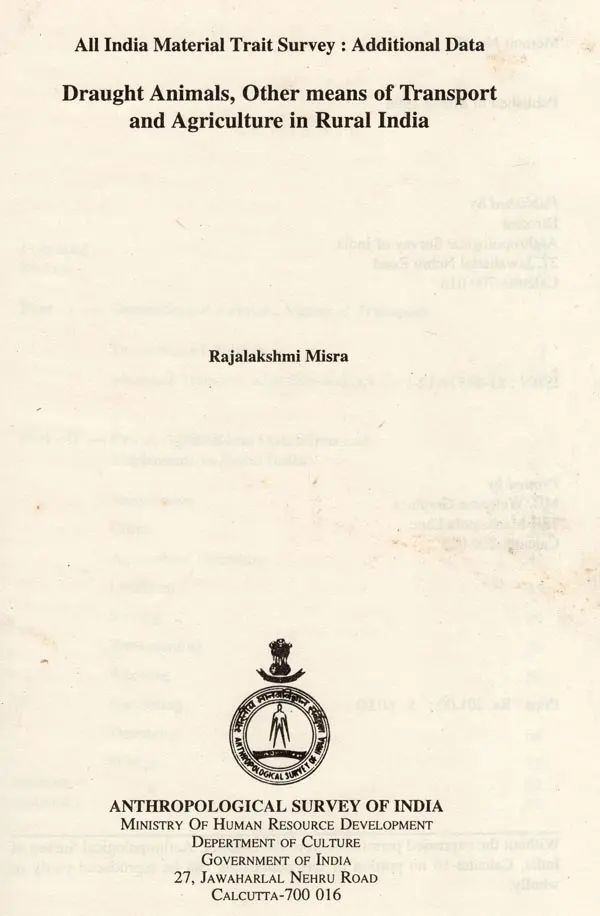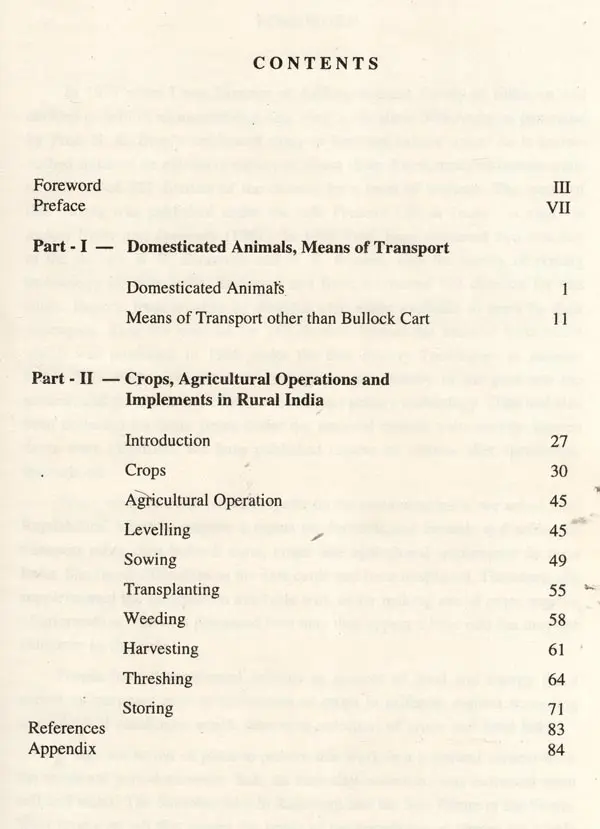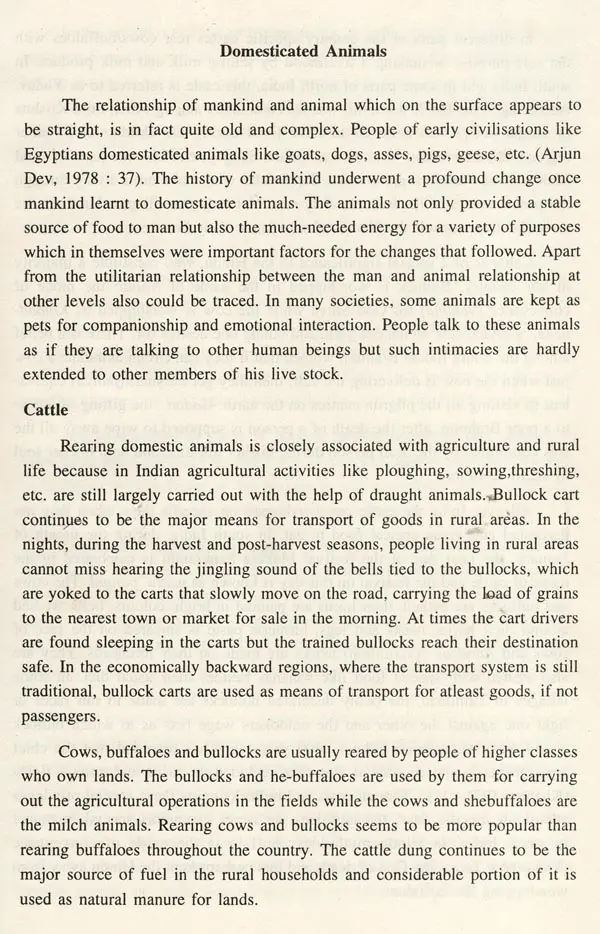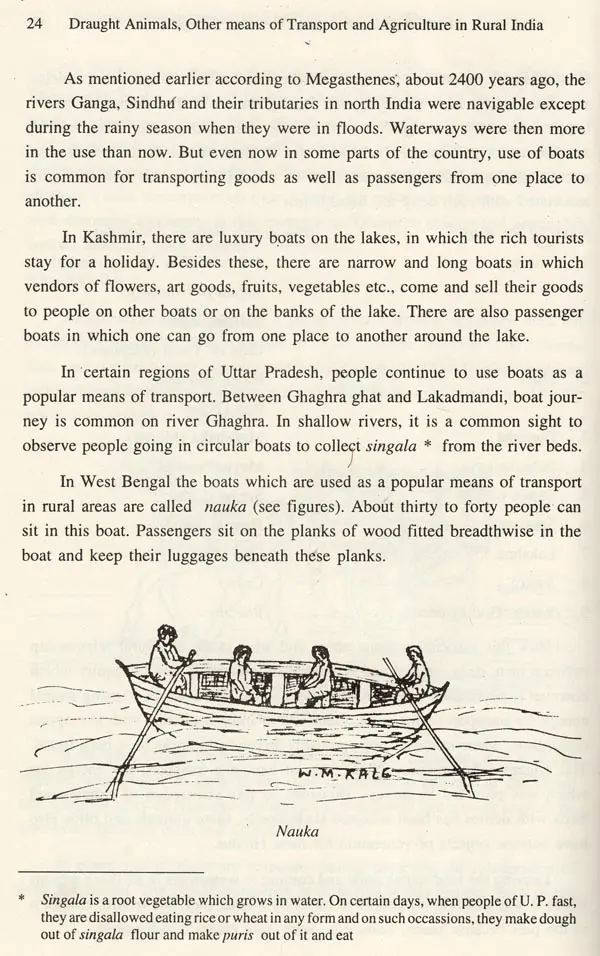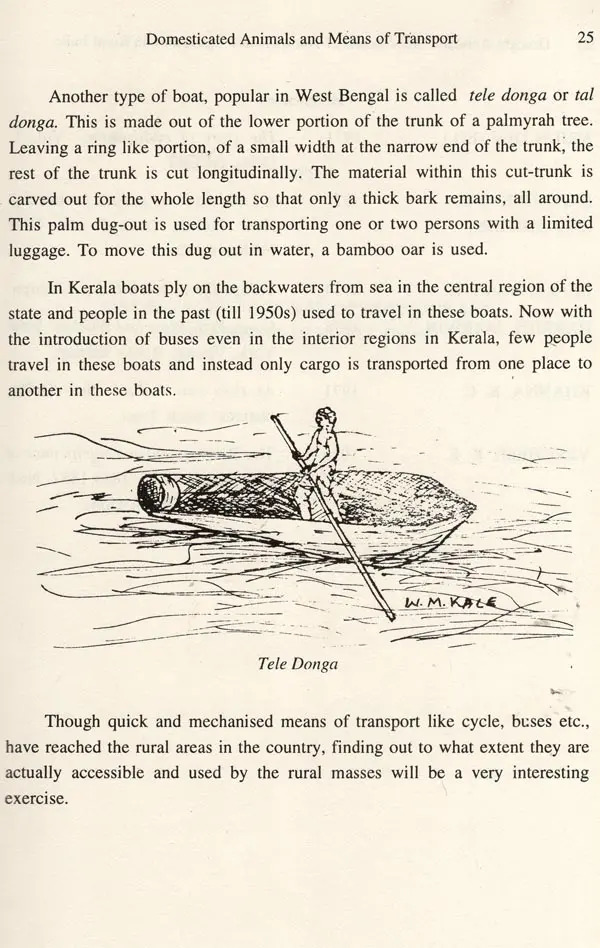
Draught Animals, Other means of Transport and Agriculture in Rural India (An Old and Rare Book)
Book Specification
| Item Code: | UBF192 |
| Author: | Rajalakshmi Misra |
| Publisher: | Anthropological Survey of India, Kolkata |
| Language: | English |
| Edition: | 1996 |
| ISBN: | 8185579121 |
| Pages: | 85 (B/W Illustrations) |
| Cover: | HARDCOVER |
| Other Details | 9.50 X 6.50 inch |
| Weight | 300 gm |
Book Description
Book's Contents and Sample Pages
